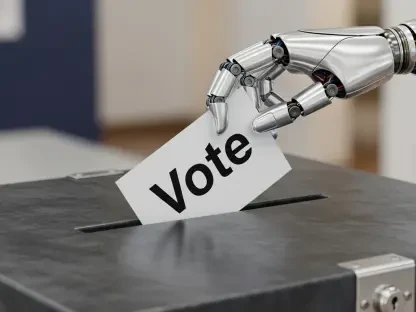A swirling debate grips the nation as a new tax law promises to reshape the employment landscape and medical insurance availability, igniting concerns and optimism across America. With health coverage tied closely to job status for millions, the implications of this legislation reach beyond fiscal policy, touching on the very core of individual well-being. As discussions intensify, questions arise about whether this policy shift will lift people into prosperity or leave many struggling to maintain essential health benefits.
The Crucial Intersection of Policy and Personal Health
At the heart of this debate is the tax law signed into action, which aims to foster significant job creation by incentivizing employment. This law, however, also introduces a requirement for adults to engage either in work, volunteering, or education to maintain their insurance eligibility. The National Economic Council has championed the legislation’s potential, citing economic growth as a catalyst that will lead to greater health coverage through employment.
With such sweeping changes, public sentiment is deeply divided. Concerns mount as reforms unravel, particularly regarding the accessibility of healthcare amid these economic modifications. As expected, these policy movements have invited differing projections and promises regarding future outcomes.
Projections Versus Promises: What’s at Stake?
The Congressional Budget Office projects a potential setback, warning that up to twelve million citizens could face the loss of Medicaid coverage due to the new legislation. This projection contrasts sharply with an optimistic narrative from Director Kevin Hassett of the National Economic Council. Hassett argues that the employment surge will mitigate insurance losses, emphasizing that alternate coverage options can accommodate those displaced by the policy shifts.
Complicating this debate are the requirements embedded in the law, prompting concerns about whether the emphasis on work and education will actually foster wider insurance access or create barriers for those unable to meet such criteria. The differing perspectives highlight a broader concern about the balance between encouraging workforce participation and safeguarding essential health services.
Insights from Thought Leaders and Affected Individuals
Hassett maintains that economic growth will lead to improved insurance coverage through job creation. He underscores the policy’s fiscal advantages and assures that those with dual coverage will continue to have access to healthcare. His perspective paints a picture of a future where employment is synonymous with secure health benefits.
Conversely, some healthcare experts and policy analysts remain skeptical, pointing to potential pitfalls where individuals may find themselves without adequate coverage. These experts warn of the risks inherent in tying insurance to employment, particularly for those unable to secure consistent work. Human stories from those directly affected by these changes offer a poignant narrative, depicting the challenges and hopes tied to this legislative transition.
Adapting to the New Reality: Practical Steps
For individuals facing potential loss of insurance, strategic planning and proactive steps become paramount. Exploring alternative coverage options, such as marketplace plans or community-based health programs, may provide safety nets amid the uncertainty. Employers, too, play a critical role by facilitating access to comprehensive health plans and advising their workforce on available resources.
Staying informed is yet another crucial approach, as legislative landscapes shift rapidly. By understanding the evolving policies and engaging in informed discussions, individuals and organizations can better navigate the complexities of this new reality.
A Balanced View: Reflection and Future Direction
As the nation grapples with the new tax law’s implications, a balanced approach is necessary to ensure both economic vitality and essential health coverage. Examining the multifaceted effects of policy shifts highlights the complexity and interconnectedness of employment and healthcare. As a society, moving forward, it is imperative to seek balanced solutions that address economic growth while safeguarding individual well-being. By engaging in dialogue and advocacy, stakeholders can influence future legislation for a more equitable healthcare landscape while embracing economic opportunity.









